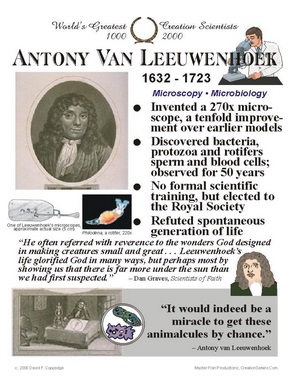Antony Van Leeuwenhoek(1632-1723)
Micro Organism of Class 8
Antony van Leeuwenhoek was an unlikely scientist. A tradesman of Delft, Holland, he came from a family of tradesmen, had no fortune, received no higher education or university degrees, and knew no languages other than his native Dutch. This would have been enough to exclude him from the scientific community of his time completely. Yet with skill, diligence, an endless curiosity, and an open mind free of the scientific dogma of his day, Leeuwenhoek succeeded in making some of the most important discoveries in the history of biology. It was he who discovered bacteria, free-living and parasitic microscopic protests, sperm cells, blood cells, microscopic nematodes and rotifers, and much more. His researches, which were widely circulated, opened up an entire world of microscopic life to the awareness of scientists.

He seems to have been inspired to take up microscopy by having seen a copy of Robert Hooke's illustrated book Micrographia, which depicted Hooke's own observations with the microscope and was very popular.
Leeuwenhoek is known to have made over 500 "microscopes," of which fewer than ten have survived to the present day. In basic design, probably all of Leeuwenhoek's instruments -- certainly all the ones that are known -- were simply powerful magnifying glasses, not compound microscopes of the type used today.









